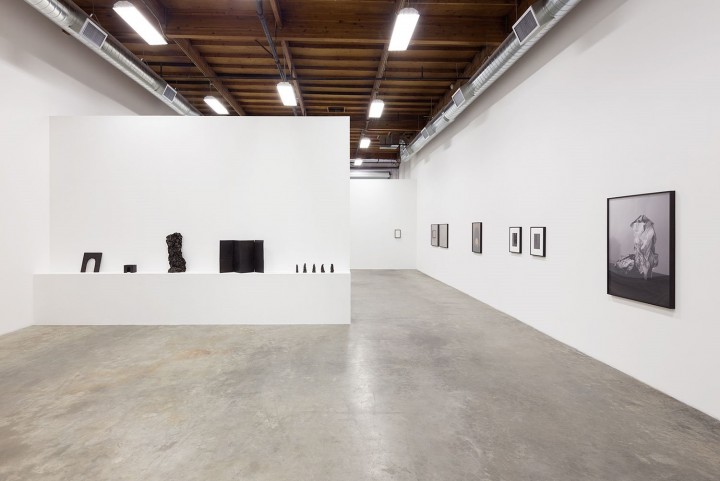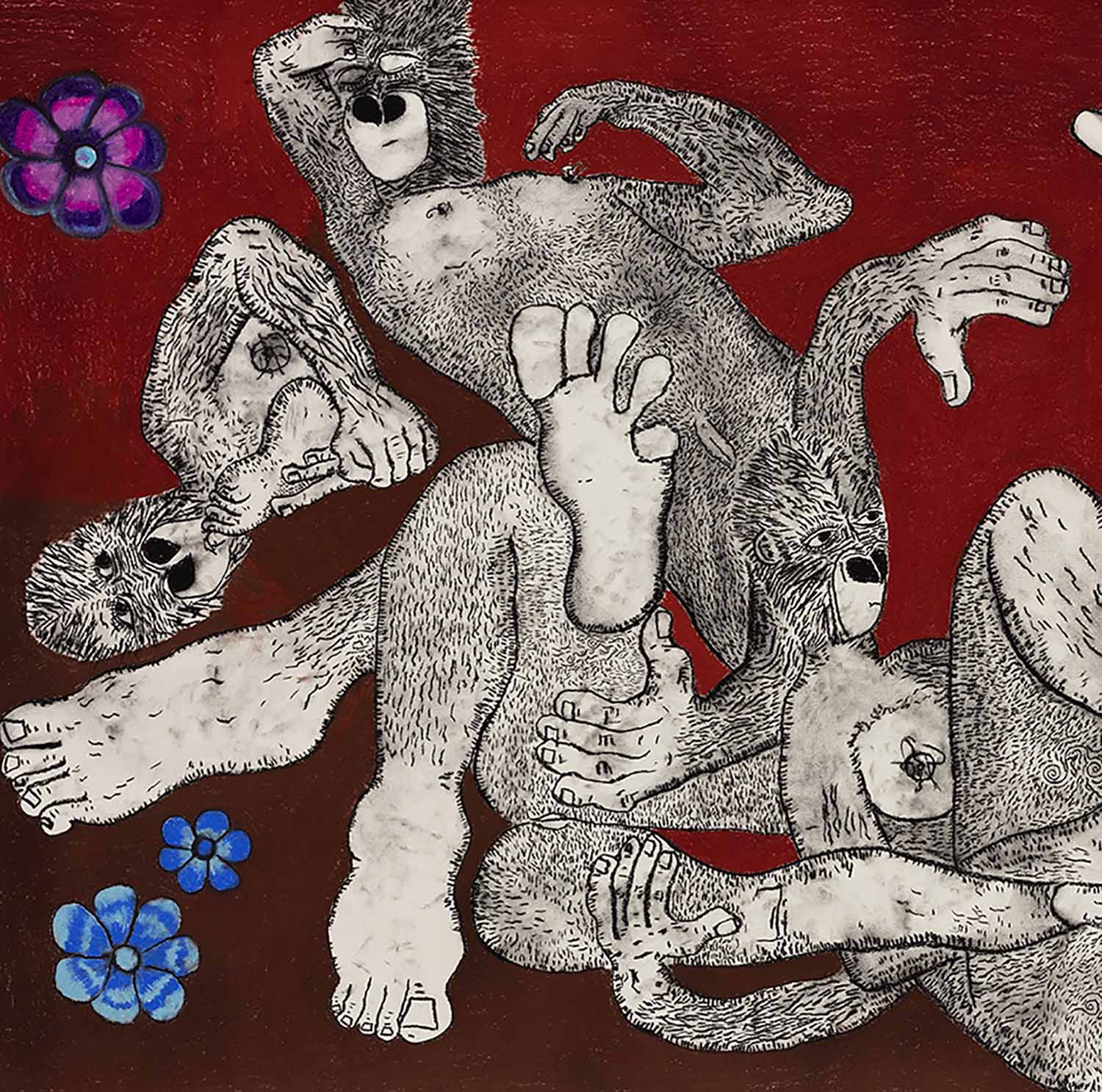At first glance, the show is unified more by palette and an economy of gesture than by medium. Nominally a photographer, here Conaway presented not just photographs that assert their status as objects — a strategy that has become her signature — but objects themselves, sculptures cast in bronze. These forms echo those seen elsewhere in the show, provoking a sense of déja vu when one encounters in three dimensions what one previously experienced as images, reduced to two.
Between these two poles are the collages. Some, like Empty Collage I and {Depression} Drawing (all works 2015), have been reduced to a point that feels deliberately painful, evoking both the anxiety inherent to an artwork’s dependence on context and the ephemeral feeling of photographs. What these works share in common with a more pictorial collage like Empty Vessel is the distinct sense of bas-relief. There’s a rawness to the sometimes roughly scissored components of these pieces, or the puncture holes in {Depression} Drawing, which call attention to the dimensionality of the surface.
After Empty Collage I, the first photograph one encounters is Fabric [Shroud], which similarly enters into dialogue with the suggestively homologous subjects of the “Figures” (the series title refers both to a C-print and to a series of bronzes), the vaguely anthropomorphic forms in Mourner [Horizontal] and Mourner [Vertical], and Fabric [Ascetics], among others. It seems that the solid, sculptural forms of the “Figures,” in particular, are what lie concealed under fabric in the “Fabric” series, but the question is deliberately left unresolved, provoking a dilemma of exchange. The visual analogies that arise between works, in the context of Conaway’s spare, tightly controlled vocabulary, finally evoke something like a Saussurian sense of the whole show as a system of differences that gain meaning only at the price of an irrecuperable arbitrariness.
Indeed, language seems not so much the heart of “Empty Vessel” as the vessel itself, through which the exhibition comes to encompass nature and civilization, history and memory, the passage of time and the physical architecture that contains it and sets its tempo. This is evinced by the titles of the works themselves — (Oval) Moon, The Battle [Left Panel] and [Right Panel], the sculptures Archway, Dwelling, and Screen. Yet what is really notable emerges from Conaway’s interest in reduction, which seems to underpin her formal understanding of photography itself. While she’s often compared to Surrealists like Man Ray, the way the works in this show withdraw from the very associative possibilities they suggest leaves the strongest impression and brings Giacometti to mind in particular.




